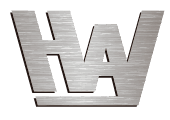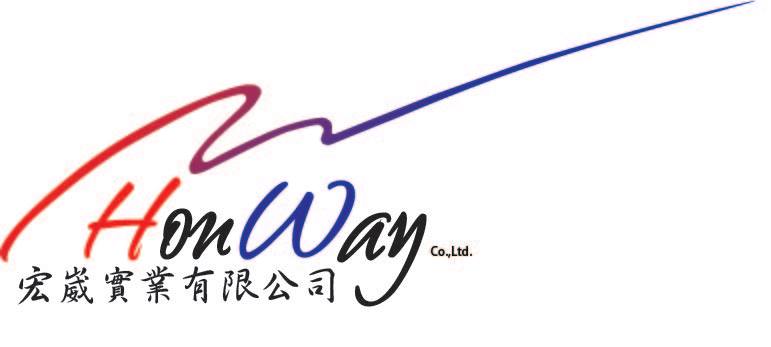In precision grinding, the performance and installation accuracy of the grinding wheel directly affect machining quality and production efficiency. Although diamond and cubic boron nitride (CBN) abrasives possess extremely high hardness, their impact resistance is poor. Improper operation can easily lead to chipping or abnormal wear, thereby affecting the grinding effect. Therefore, ensuring correct wheel installation, precision control, and equipment stability is key to improving grinding accuracy and extending wheel life.
This section will explore the factors affecting grinding wheel wear, precision standards during wheel installation, pre-installation inspection points, correct installation steps, and provide corresponding installation methods and precautions for different types of grinding wheels (such as BD wheels and electroplated wheels) to ensure the stability and safety of grinding operations.
Table of Contents
Introduction to Superabrasives
Introduction to Diamond
Diamond is the hardest substance in nature, with a Mohs hardness of 10, giving it unparalleled advantages in cutting, grinding, and polishing processes. It can effectively process various high-hardness materials such as tungsten steel, glass, ceramics, and stone.
Diamond’s wear resistance is also outstanding; it can be used for extended periods without rapid wear, allowing it to maintain high efficiency during long-term grinding
※Note: Diamond is not suitable for high-temperature machining or machining ferrous metals such as iron, nickel, and cobalt, as these metals have a strong affinity for carbon, which will catalyze diamond decomposition and form carbides or dissolve into the metal, accelerating wear and reducing hardness and durability. Therefore, diamond is not suitable for processing materials containing ferrous elements.
(Further reading: Introduction to Abrasives – Diamonds)
Introduction to Cubic Boron Nitride (CBN)
CBN’s atomic structure is very similar to diamond’s, possessing extremely high hardness, second only to diamond. However, CBN is a completely synthetic material and does not occur naturally.
The main purpose of CBN is to overcome the limitations of diamond abrasives in certain fields, especially playing a crucial role in high-temperature grinding and the grinding of high-hardness special materials such as iron, cobalt, and nickel-based alloys. Due to the chemical incompatibility of these materials with diamond, CBN is the ideal choice for industrial processing
(Further reading: Abrasives – Introduction to Cubic Boron Nitride (CBN))
Factors That Cause Abnormal Abrasive Wear During Grinding Wheel Processing
Although diamond and CBN abrasives have high hardness, their impact resistance is poor, making them prone to chipping. Therefore, special attention should be paid to the following:
- Spindle Accuracy and Wheel Mounting: The accuracy of the wheel spindle and correct mounting are crucial to ensure grinding stability.
- Spindle Vibration and Feed Mechanism: Must be fully inspected and calibrated to avoid abrasive chipping caused by vibration or improper feeding, which can also lead to wavy surfaces on the workpiece.
In addition, the stability of the wheel’s peripheral speed and infeed rate is also very important, requiring the following conditions to be met:
- Sufficient Machine Horsepower: Insufficient horsepower will cause the grinding wheel’s rotational speed to decrease during grinding, leading to abnormal wear and reduced grinding efficiency.
- Machine Rigidity and Stability: The machine must have high rigidity and be free of vibration to ensure optimal grinding results.
- Wheel Concentricity and Runout: Insufficient concentricity or excessive side runout can easily cause machine vibration, grinding noise, wavy patterns on the machined surface, and uneven wheel wear, thereby shortening the wheel’s lifespan.
Abnormalities in these factors often lead to chipping of diamond or CBN abrasives, causing scratches on the machined surface or wavy machined surfaces, as well as abnormal wear of the grinding wheel.
(Further reading: How to Control the Surface Roughness of Grinding Processing? Improve Surface Quality)
Precision Standards for Grinding Wheel Installation
To prevent abnormal grinding and improve machining quality, correct wheel installation is absolutely necessary and must meet the following precision standards:
- Outer Diameter Concentricity and Side Runout: Should be controlled within 0.02mm or even smaller to ensure grinding stability.
- Total Form Precision of the Wheel Edge: Its wobble should be controlled within 0.01mm before starting operation to avoid abnormal wear and machining errors.
- Grinding Wheels with Diameter 150mm (inclusive) or Larger: The runout should not exceed 0.0127mm.
※Note: Vibration is something that must be avoided as much as possible for grinding wheels. Vibration will cause the wheel surface to strike the workpiece, leading to abrasive shedding and further increasing surface roughness, and also causing wavy surfaces on the workpiece.
Pre-Installation Inspection of Grinding Wheels
If grinding wheels are used according to basic methods, they are safe tools. However, incorrect usage or mechanical operation errors can lead to wheel damage.
The following are items that need to be checked before using and installing grinding wheels:
- Grinding wheels marked with a safe usage period should be used within that period.
- Before installing the grinding wheel, a visual inspection for cracks, damage, chips, etc., and a tapping sound test should be performed.
- It should be confirmed that the maximum operating peripheral speed and dimensions marked on the grinding wheel are compatible with the grinding machine.
- The gap between the grinding wheel and the workpiece rest should be adjusted to within 3mm, and the gap between the grinding wheel and the tongue guard should be adjusted between 3~10mm.
- The guard should be a suitable product that covers more than one-half of the grinding wheel.
- Before starting daily work, the wheel should be test-run for more than 1 minute; when replacing the grinding wheel, it should be test-run for more than 3 minutes. The test run of handheld grinders should be performed in a safe area.
- Chip deflectors, etc., should be used to prevent sparks from splashing.
- When the wheel bore does not match the grinding machine, it is forbidden to forcibly install the grinding wheel on the spindle or arbitrarily modify the wheel bore.
Grinding Wheel Installation Steps
Step 1: When installing a protruding grinding wheel, the flange can be lightly clamped first, then a dial indicator is used to find the center, and finally the flange is tightened to fix the grinding wheel, but the nut should not be overtightened.
※*Note: At this time, do not use hammers made of materials such as lead or copper to strike the outer edge of the grinding wheel, as copper, lead, etc., will adhere to the wheel’s pores (chip pocket), causing clogging. Therefore, a nylon hammer must be used to gently tap.
Step 2: For correct installation of BD grinding wheels onto the grinding machine, the mounting surface and flange must be properly prepared. Then, with the aid of a dial indicator, the grinding wheel can be mounted in position with minimal runout.
※Note: When mounting BD grinding wheels, avoid using paper gaskets, blotting paper, or metal shims, as these can easily lead to insecure mounting.
Step 3: To reduce noise, vibration, and grinding wheel wear, the BD grinding wheel must be balanced after installation.
※Note: The entire grinding wheel assembly should be in a balanced state for proper machining. Dynamic balancing is best for large BD grinding wheels. The BD grinding wheel should be trued before balancing.
Installation of Electroplated Grinding Wheels:
Electroplated grinding wheels cannot be trued. After installation, a thorough inspection should be performed to ensure that their operation is normal.
Conclusion
Correct grinding wheel installation and operation are crucial for ensuring grinding quality, improving machining efficiency, and extending grinding wheel life. Factors affecting abnormal abrasive wear include spindle accuracy, vibration control, machine rigidity, and horsepower stability. If these conditions are not met, they will lead to abnormal wheel wear, workpiece surface defects, and reduced machining efficiency.
To prevent abnormal grinding, the concentricity, side runout, and total form precision of the grinding wheel must be controlled within standard ranges, and a detailed inspection should be performed before installation, such as verifying the safe usage period, appearance, and maximum operating peripheral speed. In addition, improper hammering should be avoided during installation, secure fastening should be ensured, and dynamic balancing adjustments should be made to reduce noise and vibration and ensure machining stability.
Electroplated grinding wheels cannot be trued and require a thorough inspection after installation to ensure normal operation. By strictly following these guidelines, grinding accuracy can be effectively improved, abnormal wear reduced, and overall machining quality optimized.
Action
- How to choose grinding wheel>>>How to Choose Between Diamond Wheels and CBN Wheels?
- The Key Role of Grinding Wheel Performance>>Bond
- How to choose tools for cutting bonded grinding wheels>>How to Dress Grinding Wheels with Different Bond Type
- Is the current grinding wheel wear normally>>>What is the current status of the grinding wheel? – Electroplated Grinding Wheel Section
- How to dress a grinding wheel>>Grinding Wheel Dressing and Sharpening Methods
- Grinding wheel dressing in two stages>>What Are Truing and Dressing of Grinding Wheels?
- How to choose tools for cutting bonded grinding wheels>>How to Choose Grinding Wheel Dressing Tools
- Different grinding states of cutting edge>>In-depth understanding of grinding wheel cutting edge shapes, variations, and self-sharpening mechanisms
- Implement>>Diamond and boron nitride grinding wheels, polishing abrasives, polishing equipment, polishing tools, diamond dressing tools
- How to dress different bonding agents>>How to Dress Grinding Wheels with Different Bond Types
- Review
We offer customized adjustments to the grinding process, tailored to meet processing requirements for maximum efficiency.
After reading the content, if you still don’t know how to select the most suitable option,
Feel free to contact us and we will have specialist available to answer your questions.
If you need customized quotations, you’re also welcome to contact us.
Customer Service Hours: Monday to Friday 09:00~18:00 (GMT+8)
Phone: +8867 223 1058
If you have a subject that you want to know or a phone call that is not clear, you are welcome to send a private message to Facebook~~
Honway Facebook: https://www.facebook.com/honwaygroup
You may be interested in…
[wpb-random-posts]

